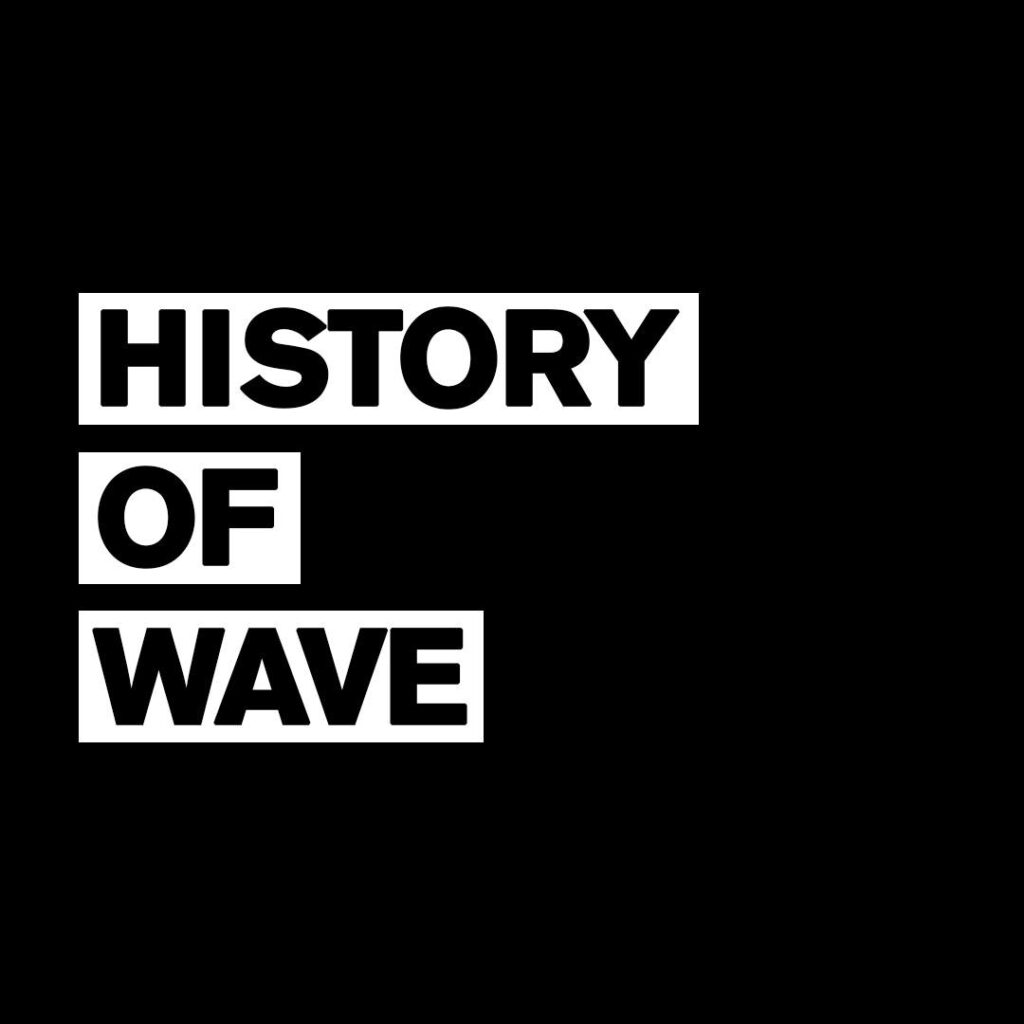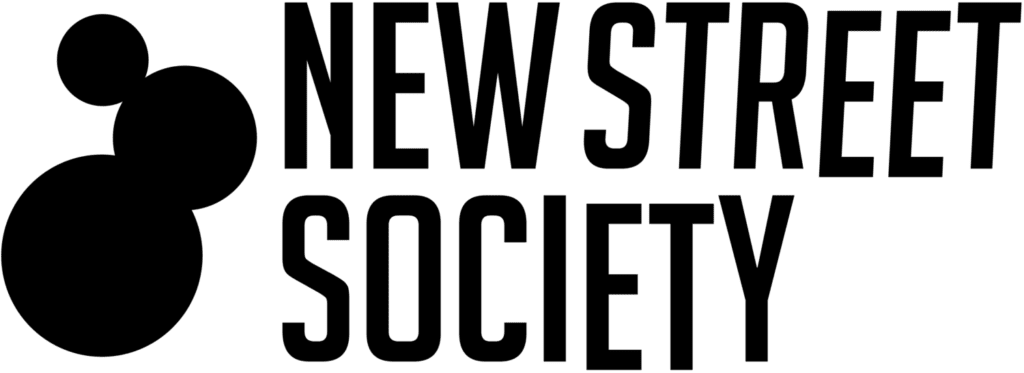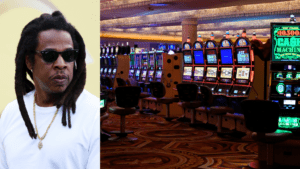History Of Wave: The Origins Of A Futuristic Sound – FUXWITHIT

I still remember it as clearly as it was yesterday. The summer of 2016 was coming to an end but the weather was still muggy and I was forced to use the PC only at night to prevent it from overheating. After an intense night spent playing Counter-Strike, I decided to dedicate myself to one of my usual SoundCloud scouting sessions. Digging and digging deep down into the endless jungle of uploads and reposts, just as the darkness of the night began to give way at the crack of dawn, the legendary wavemob’s wave 002 album surfaced in my feed. Bewitched by its iconic artwork, I pressed play, and what seemed like a normal August night suddenly became the stage of an epiphany that changed my life. Having searched for years for a genre able to combine my passion for bass music with my endless love for the intimate, dreamy, highly emotional atmospheres typical of trance, that new sound seemed like a mirage to me, too good to be true. Quoting Plastician’s words, “[wave]is a truly independent movement far removed from the mainstream music moguls. It is music built in the purest of senses.” That’s exactly what I felt in my first encounter with wave.
From that moment, for the following years as a blogger and as a fan I’ve carefully followed the growth of the movement and tried to do my little part in it. Wavemob and the_accidental_poet were my very first guides, followed by Yume, Liquid Ritual, and more recently, vibe.digital and IMMINENT Collective. Having witnessed how they (and many others of course) turned the term wave from an ambiguous label into a blazon representing a flourishing movement at the forefront of bass music has been an absolutely unique experience. Although 2020 will probably be remembered as the dark year, we cannot ignore instead how it was a period of exponential growth for wave. In the past twelve months, a good part of the bass scene realized what was happening behind the curtain and hungry for new sounds, has allowed itself to be immersed in the genre.
After a year of growth, it felt right and appropriate to me to take a moment to reflect and go back to the origins. In a world like the music industry, where too often culture is completely supplanted by business, I believe that the knowledge of our roots and where the music we listen to comes from is essential to ensure a bright future for the scene. I’m definitely not here to nostalgically defend what has been or to demonize what is new. Personally, I believe that without the “new” there is no evolution and therefore no future, but without “old” there is no identity and therefore no survival. In order to try to create a bridge between these two worlds and celebrate the history of wave, I decided to get in touch with no other than Kareful. As a pioneer whose story literally matches with the history of the movement itself, I consider him the right person to travel back to the beginning of this great journey with. In virtue of his role as an active producer and co-founder of Liquid Ritual, his knowledge spans not only across the years but also across multiple pivotal points of view.
When and how did it all begin? Where do the foundations of the wave lie? Who are its main players? This interview is not meant to be a complete encyclopedia but more of an access point through which to learn the essential know-how about this incredible genre and the culture that has emerged from it.
For a complete experience, while reading the interview I highly suggest you listen to Kareful’s History of Wave Mix.
You are widely known as one of the OGs of the scene. You were there before even the “wave” label was coined and since then you’ve always been active both as a solo artist and with your label Liquid Ritual. If we had to draw a timeline of the movement for the new fans, when should it start?
So in the beginning, before the term wave was coined, we all just existed as a group of producers on SoundCloud. What we were doing was dipping in and out of different genres and borrowing tips from trap, cloud rap, Uk dubstep, grime, witch house, trance. Wave was basically an amalgamation of all these very different styles. Eventually, the sound was picked up by Plastician, who is known for being one of the early figures in grime and dubstep, and played in his Rinse FM show which was very influential. He played a lot of our music together and this is when we all started to realize that we were a lot more linked than we originally thought. After that, the first generation of collectives such as wavemob started to appear and this is also when the term wave started becoming accepted. The process has been pretty controversial though. When people started calling the music “wave” not everyone immediately accepted the term, but later on, it just felt fitting. We obviously started playing shows and releasing compilations together, collaborating more and more, and eventually other collectives and labels started forming around specific interpretations of the sound. For example, I ended up leaving Wavemob and I started my own label named Liquid Ritual. With it, I focused more on the UK and club-oriented style of wave, which I suppose was an early form of the hardwave one that it’s starting to get popular now.
It was no longer an online genre. We had the video and photographic evidence to argue that the genre was real.
What milestones have indelibly marked the history of wave up to this point?
‘The Wave Pool’ mix (2015) made by Plastician is hands down one of the most pivotal moments in the history of wave. This was when a lot of the press started following the scene and a lot of producers started to get more interested in the sound. After that, it’s important to recall the big articles that were published back in the days. Especially the Mixmag, and UKF one, both published around 2017, were really important for the development of the scene. A lot of the early shows were determining moments for the identity of the movement, Skit’s Yusoul and Plastician’s Survey London nights above the others. I think the footage from these big events inspired a lot of producers around the world. They showed that wave wasn’t just a little online niche but it was happening in real life. The vibe.digital guys did the same a bit after in America, which has been fundamental for the growth of the international community. They started building a proper scene by throwing local shows and organizing tours also for European artists, which was incredible. I believe I also have a part in it too. While touring with Orbital in their “Comeback tour” for example I was able to play wave and introduce the genre to massive crowds of like 5 thousand people. Last but not least, the Liquid Ritual launch party where Lil Peep played was probably one of the biggest milestones in my career. We had this venue packed with excited kids and that was when I started really thinking “okay, this sound is going somewhere.” It was no longer an online genre. We had the video and photographic evidence to argue that the genre was real.
Who are the other pivotal figures in the birth and rise of the scene that every fan should know and acknowledge?
In addition to those I’ve already mentioned, Plastician, Skit and myself, I think is essential to reckon and remember the role of Trashlord, Brothel, Noah B, Klimeks, Ofdream (rip), and pretty much everyone else in the wavemob crew in the early stages. In more recent times instead, I think the artists who have had the greatest impact recently on the scene are skeler and Deadcrow.
Especially in its origins, wave was essentially a DIY, digital-based movement. Where did the first generation of artists and fans get in touch? Is there a certain platform that acted as a nest for the community more than others?
Originally it started on SoundCloud, but we didn’t really talk and engage much there. Things changed when Skype came along and a lot of producers started using this platform to connect and create huge group chats. There were loads of them! It wasn’t just with the wave guys but basically with all the main genres on SoundCloud at the time like witch house, trap, future bass. Later on came, of course, Facebook with its Groups. The ‘Wave City’ one was very important for a lot of people networking in the scene. Discord became extremely important too. The Wavepool Discord server at one point was really, really popular and pretty much everyone who was anyone in the scene was active there. Always talking about Wavepool, I believe its Reddit page has always been very important for music discovery.
In which other genres/scenes are the roots of wave set? In an electronic music family tree what would we find near it?
As I said before, wave sort of borrows bits and pieces from everything that’s ever come before. Bits of drum & bass, UK dubstep, garage, future garage, trance. It was just a natural progression. Anyway, I’d say you’re going to hear the influence mostly of SoundCloud music like trap, cloud rap and witch house. I’ve always described wave as a cleaner and more cyberpunk version of witch house or a term I’ve been using recently to describe wave would be ‘half time trance’.
The interesting thing about wave compared to a lot of other electronic music genres is that it didn’t have a real concreted bpm range when it first came out.
Going even deeper into nerd stuff, what are the lowest common denominators of wave tracks when it comes to production?
Elements you’re going to find in every wave track are, first of all, a lot of atmosphere. Of course re space is very routed to sound. Big saw wave leads, square wave leads, plucks, trancey leads, pads of course. The trap drums and stuff like 808 are essential to me. That’s pretty much everything you need to make a wave track. If you’ve got all those elements, it’s going to sound pretty wavy. The interesting thing about wave compared to a lot of other electronic music genres is that it didn’t have a real concreted bpm range when it first came out. The tracks used to go anywhere from like 100 bpm to like 155 bpm. The hardwave stuff that came later is even a little bit faster, around 140bpm to 160bpm, but most of the old wave stuff was pretty much around 120/130 bpm. Personally, I’ve always preferred the 140 bpm range. Being from the UK it’s just like a very comfortable tempo for us because it’s easier to sync it to dubstep and grime.
New sounds always start by copying the ones already existing and then they develop their own identities. However, seeing such points of view promoted in an article seemed unfair and honestly, driven just from jealousy.
Back in 2017, Noisey published this article titled “Wave Music Is a Marketing Tactic, Not a Microgenre.” Three years later, how would you answer this provocation?
When Noisey published that article I was pretty shocked so I didn’t really understand it. It kind of felt like it tore apart and poke fun at the Mixmag article, which was great instead. I felt it was just a side effect of a sort of hysteria that happened in the neighboring music scenes in the UK. Maybe at the time a lot of people felt a little bit frightened by wave because we were getting so much attention despite being a DIY movement made by young kids. We were well aware that lots of people were snobbing wave because it was too lo-fi and DIY compared to more established genres at the time. Another of the most popular “accuses” that outsiders were moving us was that wave sounded too similar to other genres. But let’s face it, this is something that happens every time. New sounds always start by copying the ones already existing and then they develop their own identities. However, seeing such points of view promoted in an article seemed unfair and honestly, driven just from jealousy.
What can you tell us about this History of Wave Mix?
I dug through my old hard drive to find some music I was playing in 2015. To my surprise, I rediscovered so many important wave classics that had been totally forgotten. Mostly because the artists are no longer active or the tracks were deleted a long time ago. I also decided to include some of the Wave classics into this mix for a couple of reasons: they’re some of the best and most influential wave tracks and two to give the newcomers a crash course in the sound. If you listen to my mixes these days I usually start around the 140 bpm mark and it slowly gets faster and faster as the mixes go on. I wanted to keep this mix true to the sound, so started off around 110 pm eventually ending at 130 bpm. This is a very moody mix, I highly recommend it with a drive around the city late at night. Enjoy!
This article is the first part of a series dedicated to the wave scene. The next issue will focus on what the future holds for the genre and, alongside Kareful, it will feature Deadcrow, Fyoomz, skeler and IMMINENT Collective.
Tracklist:
CVRL – Rodijus
Silk Road Assassins – T (Peace Edit)
Foxwedding – U Should Chill
Brothel & Sidewalks and Skeletons – Dissolution
Plastician – Tainted
Whispa – l a s t y e a r i w a s n t e v e n w h i s p a
Sorrysines – Walker
Trashlord – Ghostchant ft. Glo & Madi Larson
2nervous2be – I’m Worthless
Kareful – Remember This if Anything
Tyler – Touching
CVRL – Subtefuge
Whispa – Tokyo
Sorsari – Children of Gaia
Klasey Jones – Cement
Foxwedding – Bare
Yedgar & Harukasuka – Silk
Kareful – I Loved a Witch Once
Deadcrow – Yawn
Plastician – Windwalker
Noah B – Cathedral
Klimeks – Dreamscape 95
Compa – Pain
Trashlord – Howls (Deadcrow Remix)
Kareful – She Through Her
Skit & Klimeks – Terminal
Skit & Kareful – Luminoscity





